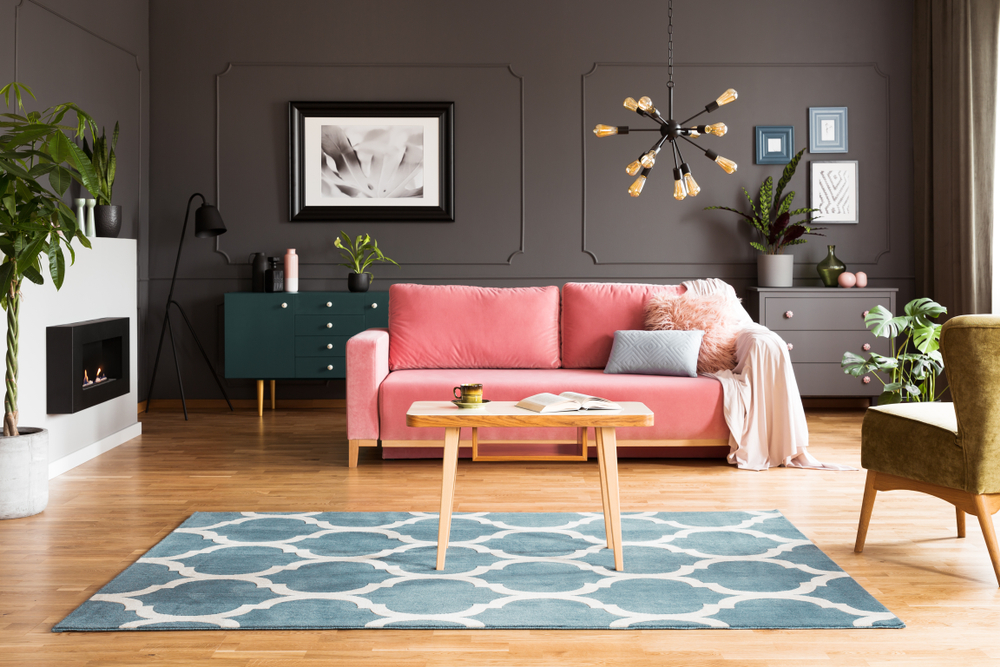There’s nothing wrong with having a small home. In fact, for the first time in many decades, we’re actually seeing younger homebuyers intentionally seeking out less square footage. This is part of a movement toward greater intentionality, sustainability, and minimalism. However, there’s a difference between having a smaller home and feeling constricted.
Even if you want to adopt a minimalist lifestyle and live in less square footage, there’s nothing wrong with wanting it to feel bigger. And, believe it or not, there are plenty of design tricks and renovation tactics you can use to accomplish this feat. Here are a few:
Let There be Light
One of the best things you can do is incorporate more natural light into your home. This instantly opens things up and makes the room feel more “breathable.” You can do this by adding more windows, expanding existing windows, or even installing skylights. (Skylights work especially well in dark hallways, bathrooms, and other interior rooms that might not have a ton of light.)
There are also steps you can take to better disperse light (natural or artificial) so that you can take full advantage of the light sources you have available to you.
“Place a large mirror directly opposite a window to help spread natural light throughout the room,” Square Inch Home Recommends. “Try combining mirrors and lighting to make a small room look bigger. Place mirrors behind table lamps or near chandeliers and pendant lights.”
Speaking of mirrors, feel free to put them in every room. In addition to reflecting light, they create an optical illusion of increased depth.
Improved Sightlines
Nothing makes a home feel tighter than lots of interior walls, doors, and compartmentalized spaces. Improving sightlines will make your house feel a lot more open and spacious.
In order to open up sightlines in an existing layout, you have to get creative. One option is to replace traditional railings with glass railing systems that create nearly unobstructed views.
Another option is to remove doors between common rooms and/or expand openings. (For example, older homes might have a door between the living room and the kitchen/dining area. Removing this door and widening the opening by several feet will give your house a totally different feel.)
Floor-to-Ceiling Pieces
When you have smaller spaces, you can instantly make your house feel bigger by drawing eyes up to the ceiling. This takes some of the emphasis away from the eye level viewpoint, which might feel a bit tight.
One way to draw the eye up is to use floor-to-ceiling pieces like built-ins. When done tastefully, this creates the illusion of more height. Another trick is to install vertical tile on kitchen and bathroom backsplashes (instead of horizontal tile).
Lighter Paint Colors
Generally speaking, dark paint colors make a room appear smaller, while light paint colors make the same room feel bigger. However, there are some nuances to this rule of thumb.
“Paint a room in a color that’s on the darker side, and you may make a light-filled room feel smaller,” designer Gabrielle Savoie mentions. “But use a stark white paint color in a north-facing room, and you may end up with a classic “white box syndrome”—a sad white room with no personality.”
Savoie recommends anything with a white tone, light taupe, blush pink, and cool gray. However, always pay attention to natural light and other elements to ensure you’re doing the space justice.
Less Clutter
To be honest, the most important step most homeowners can take is getting rid of stuff. Nothing makes a small house feel even smaller than having too many possessions. Decluttering will free up space (literally and visually) and allow you to do more with less.
If you’ve never taken the time to declutter in the past, the goal is simple: Get rid of anything that doesn’t serve a purpose and/or bring you joy. Here are some helpful tips for knowing what to keep/get rid of:
- If you haven’t used it in the past three months and don’t plan on using it in the next three months, it goes.
- If it’s something you don’t use frequently and can be easily replaced for $20 or less, get rid of it. You can buy another one if you ever need it. (Chances are you won’t.)
- Remove everything from flat surfaces (including countertops and tables). If you need the item, find storage space that’s out of sight.
Follow these simple decluttering tips and you’ll free up so much space in your home that you’ll swear it’s a different house.
Invest In Your Home
There’s nowhere you spend more time than your home. So if you’re going to invest in something, shouldn’t it be your house?
When you invest in your home, you not only benefit financially, but you also feel more satisfied and at peace. With each project, purchase, or renovation, your house becomes an even stronger expression of your inward desires. Lean in as much as you possibly can.

